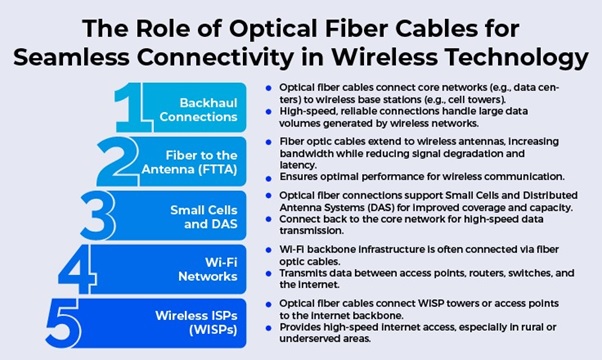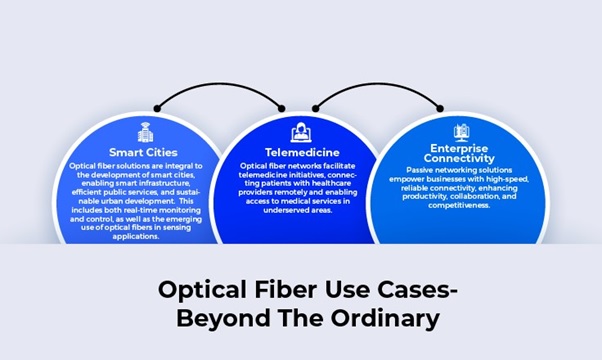Effective communication is vital for exchanging information, ideas, thoughts, feelings, or messages between individuals or groups. It is a fundamental aspect of human interaction and plays a crucial role in personal relationships, business transactions, social interactions, and virtually every aspect of life. Ensuring effective communication necessitates clarity, active listening, empathy, and adept utilization of communication channels. In this age dominated by digital connectivity, technology facilitates remote communication among individuals, regardless of whether they are in the same city or on opposite sides of an ocean. For communication across long distances, a seamless, high-speed, and low-latency internet connection is of paramount importance.
Imagine being in a virtual meeting, brimming with innovative ideas to share with your team situated all over the globe, only to be thwarted by a disrupted connection, rendering your efforts futile. This is precisely why investing in technologies such as optical fiber cables for seamless connectivity has become imperative for businesses, telecommunication companies, and network operators alike.
Optical fibers are thin strands of glass, enabling seamless, high-speed connectivity that fuel our digital interactions. In an era where the internet has become an indispensable part of daily life, the significance of seamless connectivity cannot be overstated. From communication and commerce to education and entertainment, digital technologies have permeated every facet of society. The seamless, high-speed connectivity users expect is enabled by optical fibers, thin strands of glass that can guide digital signals over long distances at the speed of light. As the fundamental backbone of internet infrastructure, optical fiber cables that house and protect the fibers are propelling the world towards seamless and uninterrupted connectivity.

The Digital Imperative: Optical Fiber Cables for Seamless Connectivity
Rising Global Connectivity Needs:
With the widespread adoption of smartphones, IoT devices, and cloud computing, there is an ever-growing demand for stable, high-speed connectivity worldwide. Optical fiber cables have emerged as the optimal solution to meet this escalating demand, offering unmatched bandwidth and transmission speeds. The market for optical fiber cables is projected to expand significantly, estimated to be worth USD 12.83 billion in 2024 and expected to reach USD 19.26 billion by 2029, with a projected Compound Annual Growth Rate (CAGR) of 8.46% during the forecast period (2024-2029). (Source-Mordor Intelligence Report).
Evolving Technological Frontiers:
Breakthroughs like 5G, artificial intelligence (AI), and edge computing are reshaping the digital landscape, necessitating resilient infrastructure capable of accommodating these innovations. By 2025, the proliferation of FTTx, 5G, and IoT will lead to a substantial increase in network endpoints, with approximately 20% of global connections on 5G and an estimated 21.5 billion connected IoT devices. (Source- IoT Analytics) Optical fiber networks serve as the backbone for delivering the low latency, high bandwidth, reliability, and redundancy essential for these cutting-edge applications.
Remote Work and Education Dynamics:
The COVID-19 pandemic has accelerated the transition towards remote work and online learning, underscoring the importance of robust digital infrastructure. Optical fiber cables facilitate seamless video conferencing, remote collaboration, and virtual education, ensuring continuity during disruptive times. Additionally, they play a pivotal role in bridging the digital divide by enabling individuals in remote areas to access education, healthcare, opportunities, and information. Building a resilient network infrastructure, strongly supported by optical fiber cables, is crucial for democratizing internet access and ensuring seamless connectivity for all.

Challenges on the Road to Seamless Connectivity
Infrastructure Investment:
Deploying optical fiber networks requires significant investment in infrastructure, including laying cables and building network infrastructure. The average cost for laying or burying fiber optic cable (if we consider underground deployment) typically ranges between $1,000 to $1,250 per residential household passed, or $60,000 to $80,000 per mile of route. (Source- Dgtl Infra) However, the long-term benefits, such as increased productivity and economic growth, outweigh the initial costs. Various deployment technologies, such as aerial installation, airblown techniques (blowing/jetting), and underwater installation (floating), are available in the market. These methods enable faster deployment, save time, and require less manpower.
Regulatory Hurdles:
Regulatory barriers and bureaucratic processes can slow down the deployment of optical fiber networks, hindering progress toward seamless connectivity. Collaborative efforts between governments, industry stakeholders, and regulatory bodies are essential to overcome these challenges. According to a study by the Fiber Broadband Association, a 1% rise in broadband penetration is projected to correlate with an increase in GDP ranging from 1.2% to 1.5%.
Cybersecurity Risks:
With the proliferation of digital connectivity comes a corresponding increase in cybersecurity risks. Safeguarding optical fiber networks against cyber threats and upholding data privacy emerge as paramount considerations. Implementing robust encryption protocols and adopting proactive security measures are imperative steps in fortifying digital infrastructure against potential breaches.
Benefits of Optical Fiber Cables for Seamless Connectivity
High-Speed Data Transmission
Optical fiber cables facilitate fast downloads, uninterrupted streaming, and seamless real-time communication due to their high-speed data transmission capability. While copper wires typically transmit data at speeds up to 100 megabits per second (Mbps), optical fiber cables can achieve speeds exceeding 10 gigabits per second (Gbps), and even up to 100 Gbps or more in some cases. For instance, in South Korea, renowned for its extensive deployment of fiber-optic networks, internet speeds are among the fastest globally, with average download speeds exceeding 100 Mbps, facilitating a seamless online experience for users nationwide.
Reliability and Stability:
The inherent characteristics of optical fiber cables make them impervious to electromagnetic interference and signal degradation, ensuring unparalleled reliability and stability in connectivity. Unlike traditional copper cables, which are susceptible to electromagnetic interference from various sources such as power lines, radio frequencies, and nearby electronic devices, optical fiber cables transmit data using light signals through glass or plastic fibers, effectively eliminating these interference issues. This resilience to external disturbances ensures consistent and stable connectivity, even in adverse conditions such as inclement weather or high electromagnetic activity areas. A compelling real-life example of this reliability is found in the undersea fiber-optic cables that traverse vast ocean depths, connecting continents and facilitating global communication.
Scalability and Future-proofing:
One of the most significant advantages of optical fiber networks lies in their inherent scalability, which allows for seamless upgrades and expansion to meet evolving bandwidth demands and accommodate emerging technologies. Unlike traditional copper-based infrastructure, which often requires costly and disruptive overhauls to increase capacity, optical fiber networks can be easily upgraded by replacing existing equipment or adding new fiber strands without significant disruption to service. A notable global use case highlighting the scalability of optical fiber networks is the deployment of Fiber-to-the-Home (FTTH) and Fiber-to-the-Premises (FTTP) networks in urban areas. These networks not only provide ultra-fast broadband access to residential and commercial properties but also lay the foundation for smart city initiatives, IoT integration, and advanced telecommunication services, demonstrating the versatility and adaptability of optical fiber technology in meeting the evolving needs of modern societies.
Final Words:
In our digital age, seamless data flow is crucial for connectivity, with optical fiber cables serving as its backbone. These cables go beyond simple information channels; they're the essence of our technological progress. Optical fibers aren't just for telecommunications anymore. They're driving innovation everywhere, from corporate networks to everyday life. In healthcare, optical fibers enable fast data transfer for medical imaging and remote consultations, breaking down geographical barriers. In transportation, they power networks that make travel safer and more efficient. As we look ahead, it's clear: optical fiber cables are the right choice for seamless connectivity.